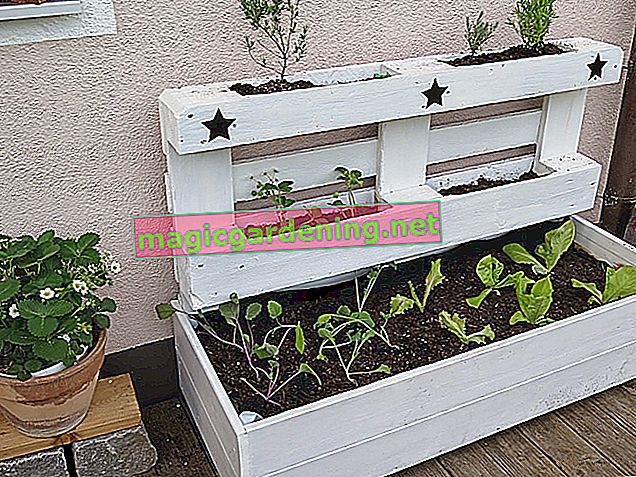
Divide irises for propagation purposes
You can also propagate your irises in the garden from seedlings if you don't cut off the withered inflorescences before the seeds ripen in late summer. However, it can take up to two or three years after sowing before the first flowers appear on the young plants. In comparison, the division of the rhizomes is a relatively easy-care method, with which a blooming period is possible in the following year.
also read
- The iris in the garden: the right location for the respective variety
- Proper care for the iris in the garden
- The best time to plant the iris in the garden
Bring rotten irises into bloom with division
If the irises in your garden produce few or no flowers, this can have various causes, such as:
- a location with too little sunlight
- poor soil conditions such as waterlogging
- an aging of the rhizome
An overaging of the rhizome can be assumed if the site conditions are otherwise good and some flowers still appear in a ring shape around a bald spot. The flowering of the irises is usually not a question of nutrients, since the very undemanding plant needs little or no fertilization, depending on the garden soil. When the flowers form in the shape of a ring, all rhizomes are dug up and only the outer, young parts are planted again at regular intervals in order to fill the bed again in a visually appealing way.
The best time to divide the irises
With the irises one can differentiate between early and late blooming species. In any case, the time after flowering is ideal for dividing the rhizomes if there is no great summer heat and drought at the same time. In this way, the newly planted offshoots can form roots at the new location in autumn and sometimes bloom again in the following year.
The correct procedure for dividing irises
Since the shape of the rhizomes cannot be assessed well above ground, you should not simply prick off irises from the ground with a spade, as is possible with some perennials in the garden. Dig up the rhizomes as gently as possible with a digging fork so that no leaf roots break off. Then divide the rhizome by cutting off pieces the size of a hand with a clean, sharp knife or spade. Make sure that the cut surfaces are as straight and small as possible so that the attack surface for germs does not become too large. Sort out the oldest parts of the rhizome if you don't necessarily want to multiply your irises in numbers.
Prepare the soil before replanting
Because of their frugality, irises do not necessarily need regular fertilization. But you are doing the plants a favor if you loosen up the soil with some deposited compost as part of the division propagation and upgrade it in terms of nutrients. If possible, dig up the soil and add drainage materials such as gravel and sand to loamy soil.
Tips & Tricks
When dividing iris rhizomes, don't go over the top: choose a size for each piece where each piece has some roots and leaves. In addition, proportionally large cut or fracture surfaces also make the rhizome more susceptible to disease.








